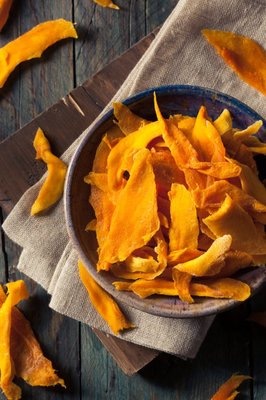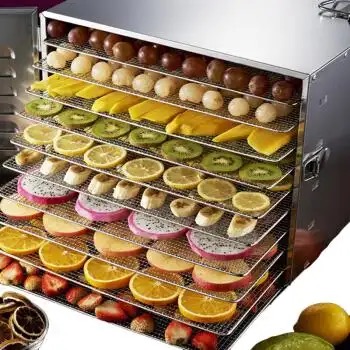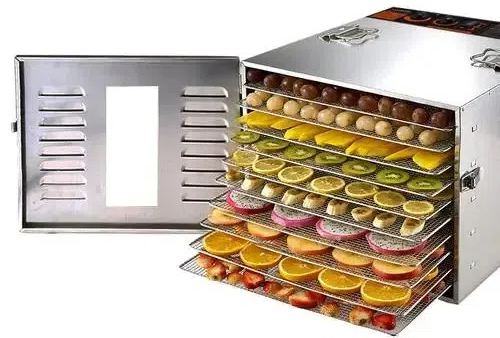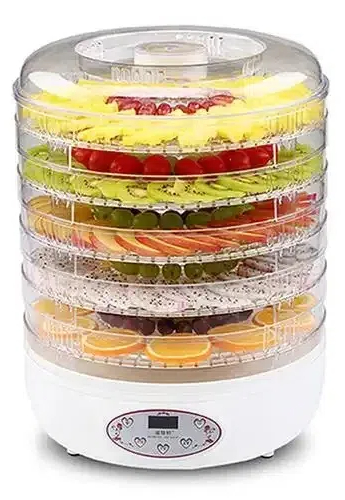
Content Menu
● Introduction
● What is a Food Drying Machine?
● Benefits of Using Food Drying Machines
● The Technology Behind Heat Pump Dryers
● Applications of Food Drying Machines
● Choosing the Right Food Drying Machine
● Maintenance and Care for Food Drying Machines
● Conclusion
● Frequently Asked Questions
>> 1. What types of foods can be dried using a heat pump dryer?
>> 2. How does a heat pump dryer differ from a conventional dryer?
>> 3. What are the energy savings associated with heat pump dryers?
>> 4. Can I use a heat pump dryer for commercial food drying?
>> 5. How do I maintain my food drying machine?
Introduction
Food preservation is a crucial aspect of maintaining the quality and safety of our food supply. Among various methods, drying has emerged as one of the most effective techniques, allowing for the long-term storage of food while retaining its nutritional value. Food drying machines, particularly heat pump dryers, have revolutionized this process, making it more efficient and accessible for both home cooks and commercial producers.

What is a Food Drying Machine?
A food drying machine is an appliance designed to remove moisture from food items, thereby inhibiting the growth of bacteria, yeasts, and molds. There are several types of food drying machines, including dehydrators, convection ovens, and heat pump dryers. Heat pump dryers, in particular, utilize advanced technology to dry food at lower temperatures, preserving more nutrients and flavors compared to traditional methods.
Benefits of Using Food Drying Machines
The benefits of using food drying machines are manifold. Firstly, they help preserve the nutrients and flavors of food, making dried fruits and vegetables not only safe to eat but also delicious. Secondly, dried foods have a significantly extended shelf life, allowing consumers to stock up on seasonal produce without the fear of spoilage. Lastly, using a food drying machine can be more cost-effective than other preservation methods, such as canning or freezing, especially for those who grow their own food.
The Technology Behind Heat Pump Dryers
Heat pump dryers operate by extracting moisture from food using a closed-loop system. They draw in air, heat it, and then circulate it through the food, absorbing moisture. This moisture-laden air is then passed through a heat exchanger, where the moisture is condensed and collected, allowing the now-dry air to be recirculated. This process not only saves energy but also ensures that food is dried evenly and gently, making it ideal for delicate items like herbs and fruits.
Applications of Food Drying Machines
Food drying machines are versatile and can be used in various settings. In homes, they are perfect for making snacks like dried fruits, jerky, and vegetable chips. In commercial settings, they are invaluable for preserving large quantities of food, ensuring that businesses can offer a wide range of dried products. Popular foods suitable for drying include apples, bananas, tomatoes, and even meats, which can be transformed into delicious jerky.

Choosing the Right Food Drying Machine
When selecting a food drying machine, several factors should be considered. Capacity is crucial, especially for those who plan to dry large batches of food. Energy efficiency is another important aspect, as it can significantly affect operating costs. Additionally, features such as adjustable temperature settings, timers, and ease of cleaning can enhance the user experience. Popular brands like Excalibur and Magic Mill offer a range of models catering to different needs and budgets.
Maintenance and Care for Food Drying Machines
Proper maintenance of food drying machines is essential for longevity and performance. Regular cleaning of trays and filters helps prevent the buildup of food particles and ensures efficient operation. Users should also check for any signs of wear and tear and follow the manufacturer's guidelines for care. Common issues, such as uneven drying or overheating, can often be resolved with simple troubleshooting steps.
Conclusion
Food drying machines, particularly heat pump dryers, play a vital role in modern food preservation. They offer an efficient, cost-effective, and environmentally friendly way to extend the shelf life of food while retaining its nutritional value. Investing in a food drying machine can be a game-changer for both home cooks and commercial producers, allowing them to enjoy the benefits of dried foods year-round.

Frequently Asked Questions
1. What types of foods can be dried using a heat pump dryer?
A variety of foods including fruits, vegetables, herbs, and meats can be dried effectively.
2. How does a heat pump dryer differ from a conventional dryer?
Heat pump dryers use lower temperatures and recycle air, making them more energy-efficient and suitable for delicate foods.
3. What are the energy savings associated with heat pump dryers?
Heat pump dryers typically consume less energy than traditional dryers, leading to lower utility bills.
4. Can I use a heat pump dryer for commercial food drying?
Yes, many heat pump dryers are designed for both home and commercial use, offering larger capacities for bulk drying.
5. How do I maintain my food drying machine?
Regular cleaning of trays and filters, checking for wear and tear, and following the manufacturer's guidelines are essential for maintenance.












